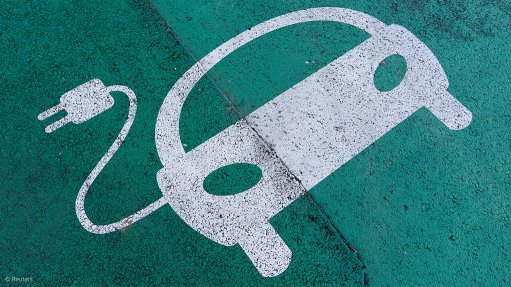
Photo by: Reuters
VANCOUVER (miningweekly.com) – London-based brokerage SP Angel has outlined the key trends that characterised the basket of energy metals during 2017 and the the outlook for 2018 in its new ‘Battery Raw Material Review, Outlook – SP Angel Commodity Research Book’ published on Wednesday.
The report pointed out that the International Monetary Fund has forecast global gross domestic product (GDP) growth 3.7% and 3.8% into 2017 and 2018, respectively, on the back of rising global investment and positive sentiment toward industrial production, manufacturing and trade. Positive global trends highlight favourable economic conditions and a supportive environment for commodities, the commodity research team found.
The Paris Agreement and subsequent ‘One Planet Summit’ are creating supportive legal and financial declarations to drive energy capacity from renewable and nuclear sources above 50% global total by 2040.
Boosted by ambitious campaigns like the EV30@30, which aims to achieve the goal of 30% market share for electric vehicles (EVs), significantly boosting demand for energy capture, storage and delivery infrastructure and associated raw materials.
Further, innovate and competing technologies are creating rapid demand for battery chemistries to generate maximum energy density. The commercialisation of closed-loop multi-metal recycling of batteries represents a fundamental new industry with significant revenue potential.
Among the key energy metals, copper will remain under long-term supply concerns, which are driving tightening market conditions as continued demand from power and construction are boosted by electro mobility.
Despite strong innovative demand from battery-technologies, market hype for nickel is exaggerated with current consumption at only 3% and dominated by stainless steel. However, sustained investment in sulphide exploration and processing is required to maintain strong production. Technological trends towards higher nickel ratio nickel-manganese-cobalt batteries will only exacerbate consumption.
The darling of the energy mobility revolution, lithium consumption is expected to swell over three-times over the next decade across renewable energy and electromobility sectors. However, the number of new projects seeking finance for development could easily place the market in oversupply, with large, established producers able to manipulate output. Brine production will control the majority of supply, with expected Chinese chemical conversion capacity bottlenecks generating competitive spodumene market with a strong focus on quality.
Meanwhile, the London Metals Exchange’s probe into ethical, inelastic supply from the Democratic Republic of Congo is expected to increase the strain on transparent, responsible mining operations and new Australian and Canadian projects. Rapidly rising high-grade premium pricing is elevating the risk of substitution in next-generation lithium-ion batteries, the SP Angel team has found.